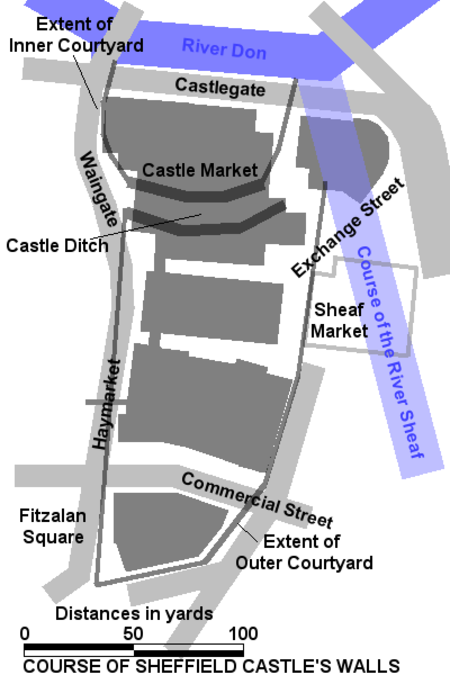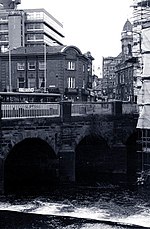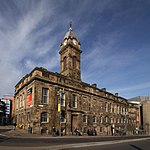Sheffield Castle

Sheffield Castle was a castle in Sheffield, England, constructed at the confluence of the River Sheaf and the River Don, possibly on the site of a former Anglo-Saxon long house, and dominating the early town. A motte and bailey castle had been constructed on the site at some time in the century following the Norman Conquest of England in 1066. This was destroyed in the Second Barons' War. Construction of a second castle, this time in stone, began four years later in 1270. Mary, Queen of Scots was held prisoner in this castle and its associated estates at various times during the 14 years between 1570 and 1584, alternating with other properties of George Talbot, 6th Earl of Shrewsbury. The castle was held by Royalist forces for part of the English Civil War, and was surrendered to the Parliamentarians in 1644 following a short siege. Its demolition was ordered soon after, and the castle was razed. There are no known surviving drawings or plans of the castle, but excavations in the 1920s revealed stone foundations from the castle begun in 1270 as well as evidence of earlier structures. Further architectural investigation was possible in 2015, following the demolition of the 20th-century market which had been built on top of the ruins.
Excerpt from the Wikipedia article Sheffield Castle (License: CC BY-SA 3.0, Authors, Images).Sheffield Castle
Exchange Street, Sheffield City Centre
Geographical coordinates (GPS) Address Nearby Places Show on map
Geographical coordinates (GPS)
| Latitude | Longitude |
|---|---|
| N 53.384722222222 ° | E -1.4633333333333 ° |
Address
Exchange Street
S2 5TS Sheffield, City Centre
England, United Kingdom
Open on Google Maps











